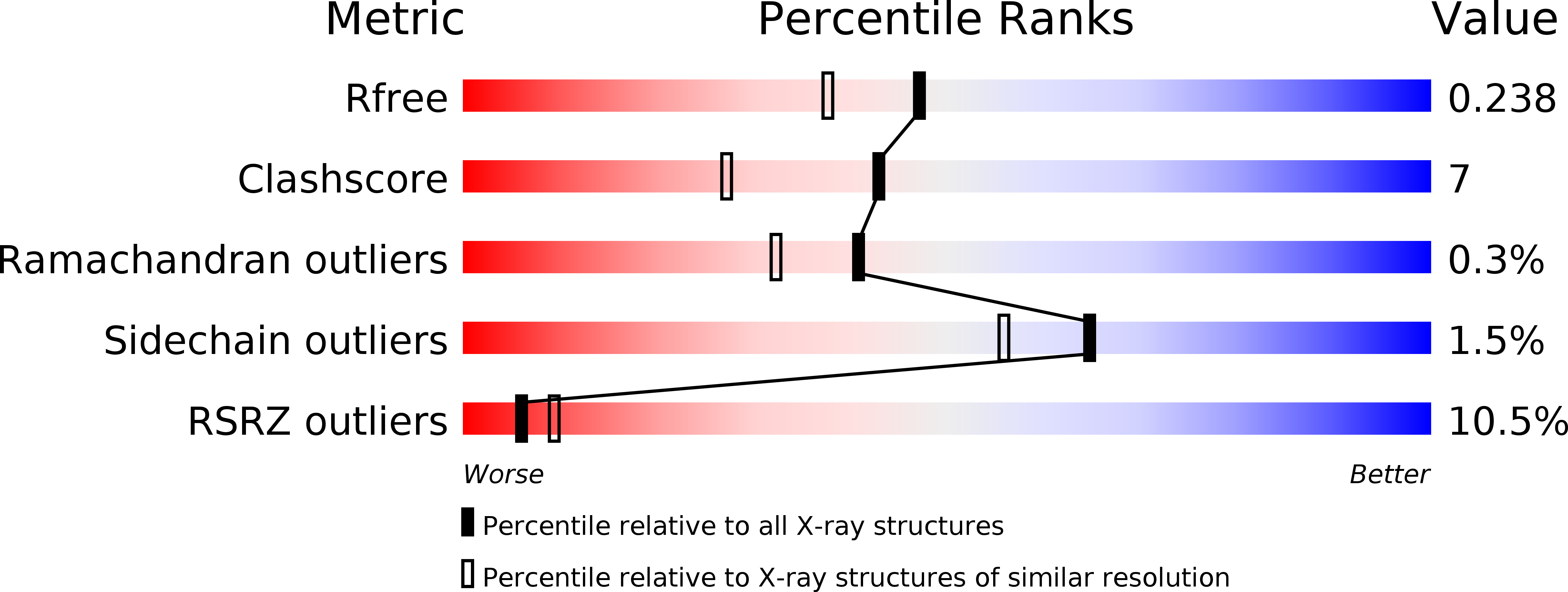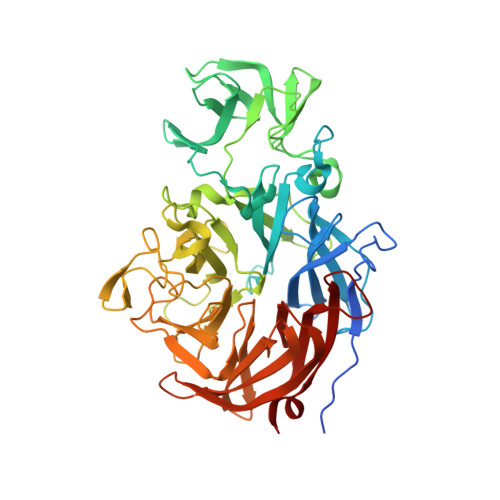Polyvalent Transition-State Analogues of Sialyl Substrates Strongly Inhibit Bacterial Sialidases*.
Assailly, C., Bridot, C., Saumonneau, A., Lottin, P., Roubinet, B., Krammer, E.M., Francois, F., Vena, F., Landemarre, L., Alvarez Dorta, D., Deniaud, D., Grandjean, C., Tellier, C., Pascual, S., Montembault, V., Fontaine, L., Daligault, F., Bouckaert, J., Gouin, S.G.(2021) Chemistry 27: 3142-3150
- PubMed: 33150981
- DOI: https://doi.org/10.1002/chem.202004672
- Primary Citation of Related Structures:
7A54, 7A5X - PubMed Abstract:
Bacterial sialidases (SA) are validated drug targets expressed by common human pathogens such as Streptococcus pneumoniae, Vibrio cholerae, or Clostridium perfringens. Noncovalent inhibitors of bacterial SA capable of reaching the submicromolar level are rarely reported. In this work, multi- and polyvalent compounds are developed, based on the transition-state analogue 2-deoxy-2,3-didehydro-N-acetylneuraminic (DANA). Poly-DANA inhibits the catalytic activity of SA from S. pneumoniae (NanA) and the symbiotic microorganism B. thetaiotaomicron (BtSA) at the picomolar and low nanomolar levels (expressed in moles of molecules and of DANA, respectively). Each DANA grafted to the polymer surpasses the inhibitory potential of the monovalent analogue by more than four orders of magnitude, which represents the highest multivalent effect reported so far for an enzyme inhibition. The synergistic interaction is shown to operate exclusively in the catalytic domain, and not in the flanked carbohydrate-binding module (CBM). These results offer interesting perspectives for the multivalent inhibition of other SA families lacking a CBM, such as viral, parasitic, or human SA.
Organizational Affiliation:
CNRS, CEISAM UMR, 6230, Université de Nantes, 44000, Nantes, France.


















